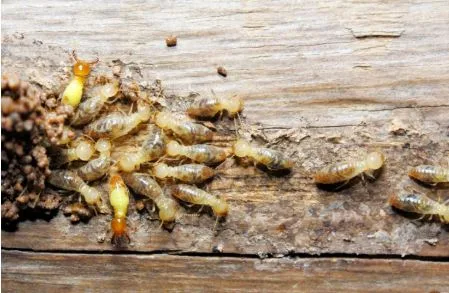What to Expect During a Professional Termite Inspection
Termites are one of the most destructive pests a homeowner can face. These tiny insects can quietly cause thousands of dollars in damage before you even notice there’s a problem. That’s why professional termite inspections are a critical part of home maintenance—especially in termite-prone areas.
Whether you’re a homeowner, buyer, or seller, knowing what happens during a termite inspection can help you feel more prepared and make informed decisions. In this article, we’ll walk you through what to expect during a professional termite inspection, including the process, tools used, and what happens after the inspection.
Why a Termite Inspection Is Important
Before diving into the process, it’s worth understanding why termite inspections are so important:
- Early detection of an infestation can save you thousands in repairs.
- Termite damage often isn’t covered by homeowners insurance.
- Regular inspections help maintain your property value.
- If you’re buying or selling a home, an inspection is often required by lenders or state laws.
With that in mind, let’s explore what actually happens during a termite inspection.
Step 1: Scheduling and Preparing for the Inspection
When you contact a licensed pest control company, they’ll usually schedule a time that works for you—most inspections take 1 to 2 hours, depending on the size of your property.
Here are a few ways to prepare:
- Clear clutter from around your home’s foundation.
- Move furniture away from walls where possible, especially in basements.
- Ensure access to attics, crawl spaces, basements, and garages.
- If you’re selling your home, make sure the inspector can access all rooms and utility areas.
Being prepared helps the inspector do a more thorough job and minimizes the need for follow-up visits.
Step 2: Interview and Background Check
The inspection usually begins with a brief discussion between you and the pest control technician. They may ask:
- Have you seen any mud tubes, droppings, or wings?
- Have you had termite problems before?
- Are there any previous treatments or known repairs?
Sharing this information helps the inspector know where to look and what to expect.
Step 3: Exterior Inspection
The inspector will first examine the outside of your home, paying special attention to:
- The foundation (for mud tubes or cracks)
- Wood-to-soil contact (e.g., wooden siding, fence posts, or decks touching the ground)
- Mulch beds, firewood stacks, and tree stumps near the structure
- Cracks in brickwork or concrete slabs
- Drainage and moisture-prone areas
They’re looking for entry points, moisture problems, and signs of active or past termite activity. This part of the inspection often reveals how vulnerable your home is to termites.
Step 4: Interior Inspection
Next, the inspector moves indoors to check for visual signs of infestation. They’ll inspect:
- Baseboards, windows, and door frames
- Hardwood floors and trim
- Cabinets and other built-in wooden structures
- The attic for exposed beams or rafters
- Any crawl spaces or unfinished basements
They may tap on wood surfaces to listen for a hollow sound, which can indicate internal damage. Tools such as moisture meters or infrared cameras might also be used to detect hidden activity or conducive conditions like damp wood.
Step 5: Identifying Signs of Termite Activity
Professional inspectors are trained to look for the telltale signs of termite presence, including:
- Mud tubes (used by subterranean termites to travel and stay moist)
- Frass (termite droppings that look like sawdust or coffee grounds)
- Discarded wings (often near windows or doors after swarming)
- Bubbling paint or damaged wallpaper
- Warped doors or floors
- Small holes or galleries inside wood
Some of these signs may be subtle or resemble water damage, but experienced inspectors know how to distinguish them.
Step 6: Inspecting Substructures
If your home has a crawl space, basement, or pier-and-beam foundation, this area will receive special attention. Termites often enter from the ground up, so inspectors will look for:
- Signs of dampness or poor ventilation
- Exposed wood framing or floor joists
- Active mud tubes
- Rotting wood or fungus, which attracts termites
In cases where space is tight or difficult to access, the inspector might use borescopes (small cameras) or other tools to look into hard-to-reach areas.
Step 7: Tools and Technology
Here are some tools a professional may use:
- Flashlight – Essential for inspecting dark corners, crawlspaces, and attics.
- Screwdriver or probe – Used to gently test wood strength and detect soft spots.
- Moisture meter – Detects damp areas where termites may thrive.
- Infrared camera – Identifies temperature changes in walls and floors that may suggest termite activity.
- Borescope – A small camera used to look inside walls or structural voids.
The use of these tools can help locate termite activity that would otherwise go undetected.
Step 8: The Inspection Report
Once the inspection is complete, the technician will create a detailed inspection report, which typically includes:
- A summary of any evidence of termites (active or past)
- A list of conducive conditions (e.g., excessive moisture, wood-to-soil contact)
- Photos of damage or activity
- Recommendations for treatment or preventative measures
- An estimate for any remedial work or follow-up inspections
In real estate transactions, this report may also serve as a WDI (Wood Destroying Insect) report, often required by lenders.
Step 9: What Happens If Termites Are Found?
If termites are detected, your inspector will walk you through treatment options, which may include:
- Liquid soil treatments – To create a chemical barrier around the foundation.
- Termite bait systems – Used to attract and eliminate termite colonies over time.
- Foam or dust treatments – For wall voids and hard-to-reach places.
- Spot wood treatments – If damage is limited to small areas.
- Fumigation – In cases of widespread drywood termite infestations.
They will also recommend repairs or preventive changes, like fixing leaks, sealing cracks, and improving drainage.
Step 10: Moving Forward – Prevention and Maintenance
Even if no termites are found, the inspector may still suggest preventative steps to protect your home:
- Keep woodpiles and mulch away from the house.
- Repair any plumbing leaks or roof issues.
- Maintain good ventilation in crawl spaces and attics.
- Consider annual or biannual inspections moving forward.
Many pest control companies offer annual protection plans, which include routine inspections and treatment guarantees.
Conclusion
A professional termite inspection is one of the smartest ways to protect your home from serious structural damage. It’s quick, non-invasive, and provides you with peace of mind. Whether you’re maintaining your current property or purchasing a new one, knowing what to expect from a termite inspection helps you stay one step ahead of a costly and hidden threat.
Don’t wait until the damage is done—schedule your inspection today and safeguard your investment.





